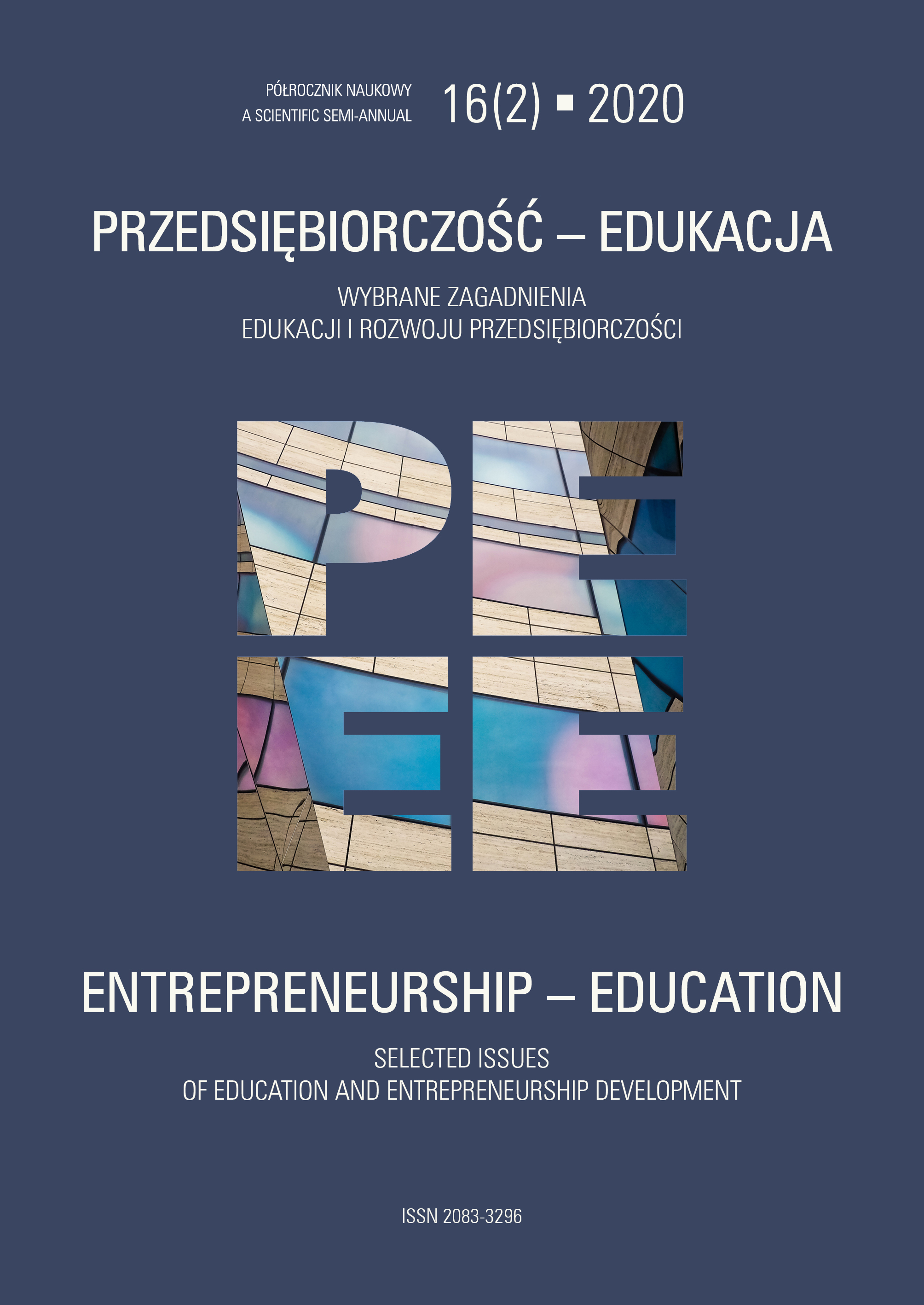Statutory Limits and Differentiation of Loan Costs
DOI:
https://doi.org/10.24917/20833296.162.19Keywords:
consumer, consumer credit, consumer protection, credit costs, credit process, comparability of credit offersAbstract
Competence in making credit decisions is becoming increasingly important in view of the growing social debt. The protection of consumer interests is pursued under various specific purposes. These include protection against incurring excessive fees and risk of losing loan repayment capacity. Regulator interventions in the form of interest and non-interest loan costs limits are used to achieve the first of these objectives. Literature studies and conclusions from the analysis of cash loan offers of the largest banks in Poland indicate the diverse importance of regulations in the area of reducing loan costs. The interest rates on cash loans used by a significant number of banks covered by the survey turned out to be close to the maximum statutory level, which may mean that regulations are a real barrier protecting consumers from incurring excessive costs. On the other hand, in relation to non-interest loan costs, the amount of fees turned out to be far from the statutory limits, which entails there is no real significance of restrictions in this segment of the loan and loan market. In addition, the degree of differentiation in total loan costs in the analysed cash loan offers proved to be high. This means that the current state of the market does not protect consumers against the risk of “overpaying” for credit and does not release them from the need to analyse offers.
References
Bączyk, M. (2007). Komentarz do art. 110 ustawy Prawo bankowe. W: E. Fojcik-Mastalska (red.), Prawo bankowe. Komentarz. LexisNexis/el.
Bień, A., Bień, W. (2009). Kalkulacja ceny pieniądza w lokatach, pożyczkach i kredytach. Warszawa: Difin.
Czapiński, J., Panek, T. (red.). (2015). Diagnoza społeczna 2015. Warunki i jakość życia Polaków. Warszawa: Rada Monitoringu Społecznego.
Czech, T. (2018). Komentarz do art. 36a ustawy o kredycie konsumenckim. W: T. Czech, Kredyt konsumencki. Komentarz. Wolters Kluwer Polska/el.
Dobosiewicz, Z. (2011). Bankowość. Warszawa: PWE.
Dobosiewicz, Z. (2007). Kredyty i gwarancje bankowe. Warszawa: PWE.
Dobosiewicz, Z. (2001). Podstawy bankowości. Warszawa: Wydawnictwo Naukowe PWN.
Gafrikova, V. (2016). Koszty kredytu konsumenckiego w świetle regulacji prawnych. Przedsiębiorstwo Przyszłości, 4(29), 60–75.
Golec, M.M. (2016). Instytucje i usługi bankowe. Poznań: Wyższa Szkoła Bankowa.
Koleśnik, J. (2016). Bankowość detaliczna. Warszawa: Difin.
Koncentracja sektora bankowego. (2019, 15 listopada). Pozyskano z: https://www.knf.gov.pl/Images/KONCENTRACJA_SEKTORA_BANKOWEGO-prezentacja_tcm75-42097.pdf
Milewski, R., Kwiatkowski, E. (2018). Podstawy ekonomii. Warszawa: PWN.
Nowak, P. (2017). Bezpieczeństwo konsumenta w transakcjach kredytowych. Przedsiębiorczość – Edukacja [Entrepreneurship – Education], 13, 275–288.
Ofiarski, Z. (2011). Prawo bankowe. Warszawa: Wolters Kluwer.
Olejniczak, A. (2014). Komentarz do art. 359 Kodeksu cywilnego. W: A. Kidyba (red.), Kodeks cywilny.
Komentarz LEX. Tom III: Zobowiązania – część ogólna. Wolters Kluwer/el.
Osajda, K. (2018). Art. 36a. Ustawa o kredycie konsumenckim. W: K. Osajda (red.), Ustawa o kredycie konsumenckim. Komentarz. C.H. BECK/el.
Penczar, M., Barembruch, A., Górski, P., Liszewska, M. (oprac.). (2015). Odpowiedzialne korzystanie ludzi młodych z usług kredytowych. Gdańsk: Narodowy Bank Polski, Instytut Badań nad Gospodarką Rynkową.
Rogoń, D. (2005). Komentarz do art.110 ustawy – Prawo bankowe. W: F. Zoll (red.), Prawo bankowe. Komentarz. Tom I i II. Zakamycze/el.
Rutkowska-Tomaszewska, E. (2011). Nadzór nad rynkiem finansowym a nieuczciwe praktyki rynkowe banków wobec konsumentów – zakres, potrzeba i możliwości podejmowanych działań. Studia Finansoprawne, 1, 97–112.
Stanisławska, M. (2018). Art. 36a – Ustawa o kredycie konsumenckim. W: M. Stanisławska (red.), Ustawa o kredycie konsumenckim. Komentarz. C.H. BECK/el.
Swat, B. (2006). Kredyt konsumencki. W: D. Korenik (red.), Innowacyjne usługi banku. Warszawa: Wydawnictwo Naukowe PWN, 71–88.
Szpringer, W. (2009). Społeczna odpowiedzialność banków. Między ochroną konsumenta a osłoną socjalną. Warszawa: Wolters Kluwer.
Wałęga, G. (2013). Kredytowanie gospodarstw domowych. Warszawa: PWE.
Wiśniewski, T. (2018a). Komentarz do art. 481 Kodeksu cywilnego. W: J. Gudowski (red.), Kodeks cywilny. Komentarz. Tom III: Zobowiązania – część ogólna. Wolters Kluwer/el.
Wiśniewski, T. (2018b). Komentarz do art. 359 Kodeksu cywilnego. W: J. Gudowski (red.), Kodeks cywilny. Komentarz. Tom III: Zobowiązania – część ogólna. Wolters Kluwer/el.
Downloads
Published
How to Cite
Issue
Section
License
Articles are published under the terms of the Creative Commons License (CC BY-ND 4.0; Attribution– NoDerivs).

